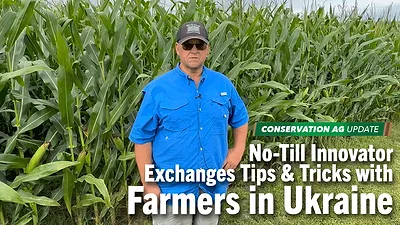The tales of young, tech-savvy entrepreneurs launching new ventures out of Silicon Valley are common. But what about three 20-something brothers who live — not in some high tech mecca — but near the small community of Wilderado, Texas, who started a new business venture?
The Gruhlkey brothers — Brittan, 24, Braden, 25, and Cameron, 20 — are farming cotton, corn, sorghum and wheat while showing how technology plays an important role in farming. The average age of Texas farmers is nearly 60 years old, making their enterprise a unique one and they’re doing this amid huge challenges, including an ongoing drought and a growing demand for water.
“Because of the era we’ve grown up in, we’re comfortable with new technology and not wedded to doing things the way they’ve always been done,” said Braden, a third-generation farmer.
These technological advancements allow them to better water and feed their crops. Through subsurface drip irrigation, they can deliver water uniformly across the field and directly to the root of the plant to use water more efficiently. Through this irrigation system, they can schedule when plants are watered and eliminate overwatering.
Samples from plant tissues give them insight into the amount of fertilizer to feed plants. The sample also gives them a glimpse of regional weather, helping them schedule when and how to irrigate crops.
In addition to this conservation work, the Gruhlkeys are also working with USDA’s Natural Resources Conservation Service to manage crop residue, rotate crops, plant cover crops, control weeds, provide plants for pollinators and use no-till and strip till methods. These efforts benefit their farm and the environment. They conserve resources, provide homes for pollinators, conserve soil moisture, maintain ground cover, prevent soil erosion and improve air quality.
These improvements were made possible through NRCS technical and financial assistance through the Ogallala Aquifer Initiative and other Farm Bill programs. This eight-state initiative supports water and energy savings through proven conservation programs. Since 2011, more than 151,000 acres in Texas have been enrolled in the initiative.
“The NRCS helped us install the best system for water use efficiency,” Braden said. “Our reward came at harvest with 240 bushel-per-acre corn in one of driest years on record. In a normal year with 18 inches of rain, we might be able to save 20 percent on water use with this system.”
If you want to see the future of agriculture in Texas, take a trip to Wilderado.





